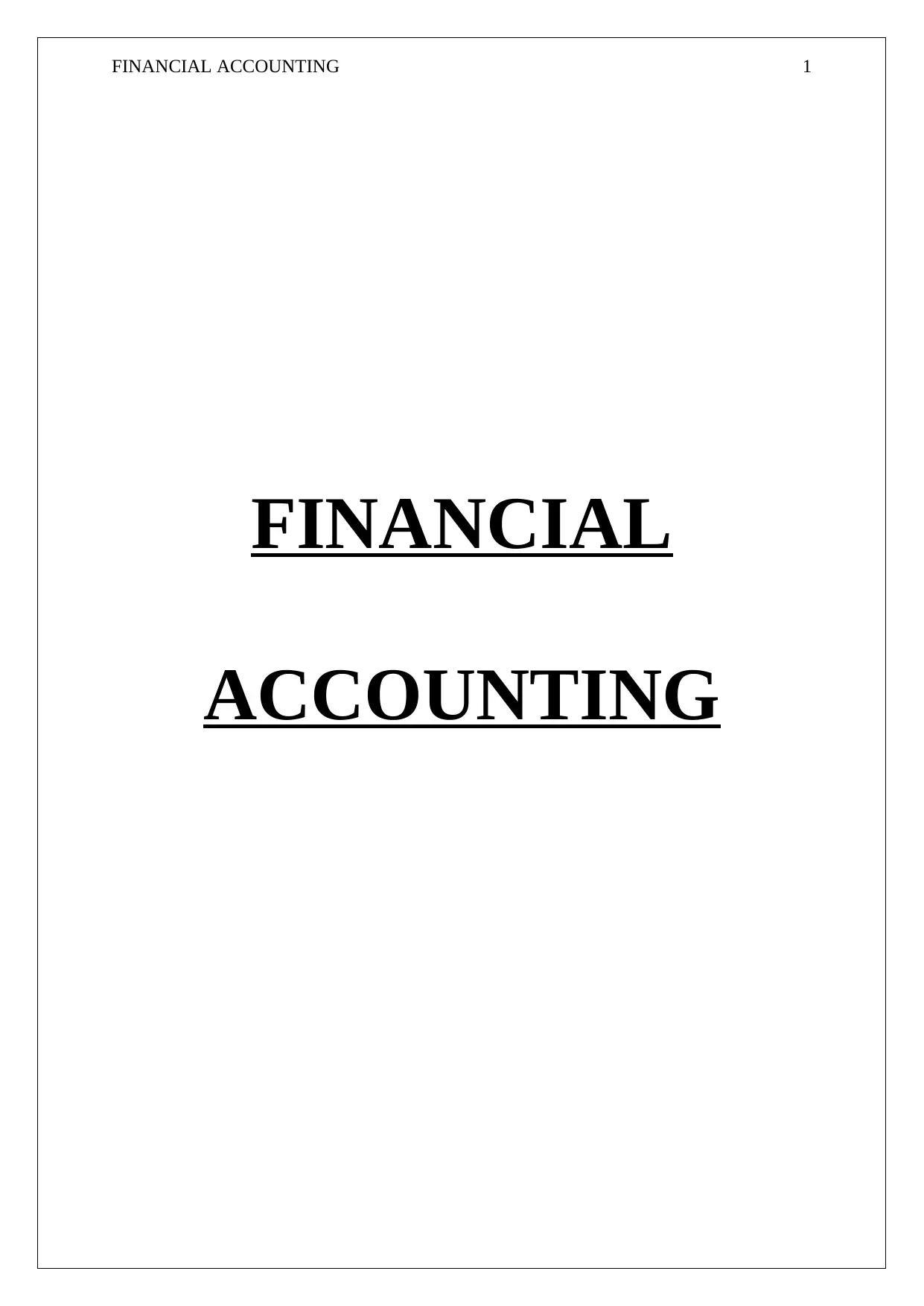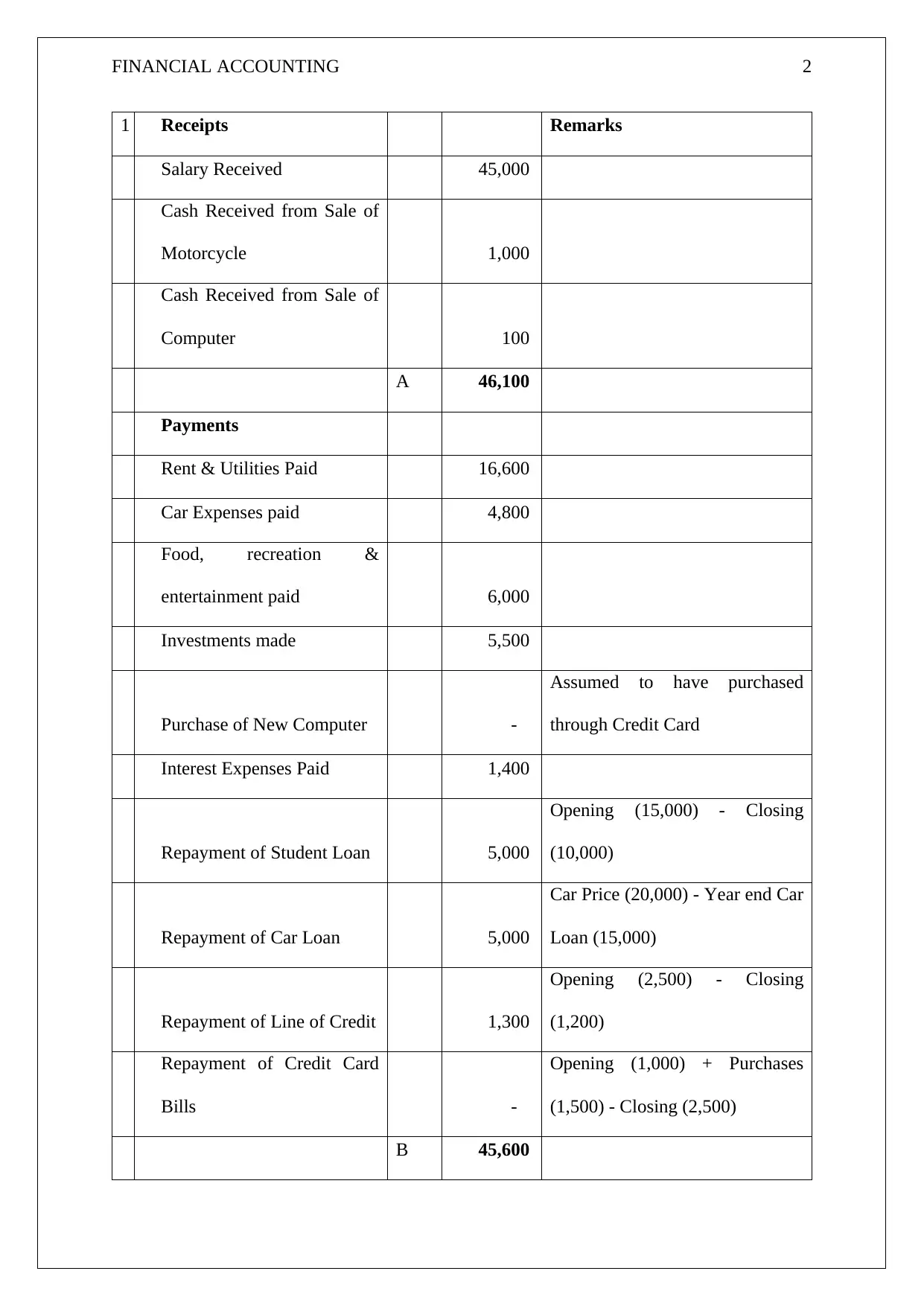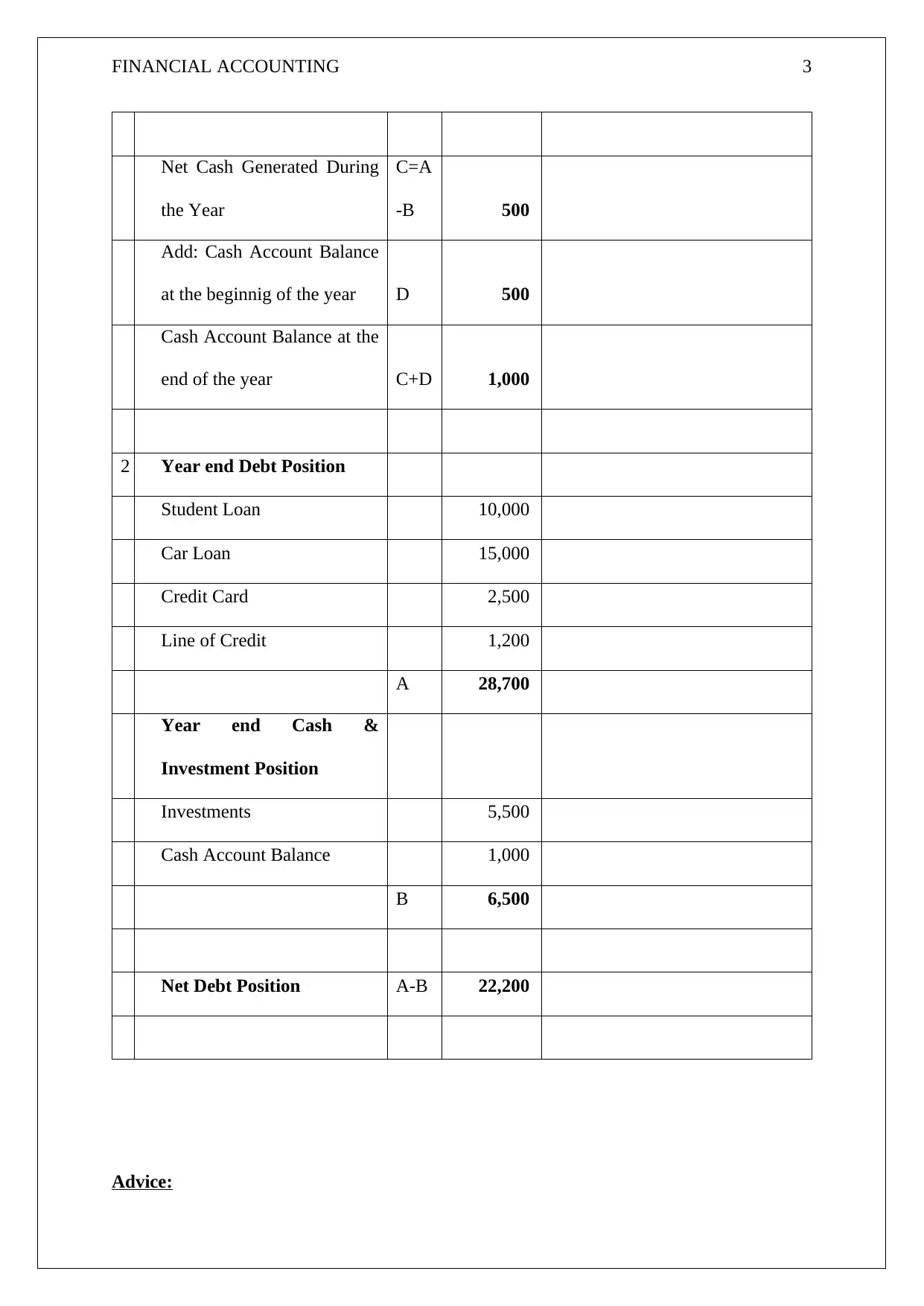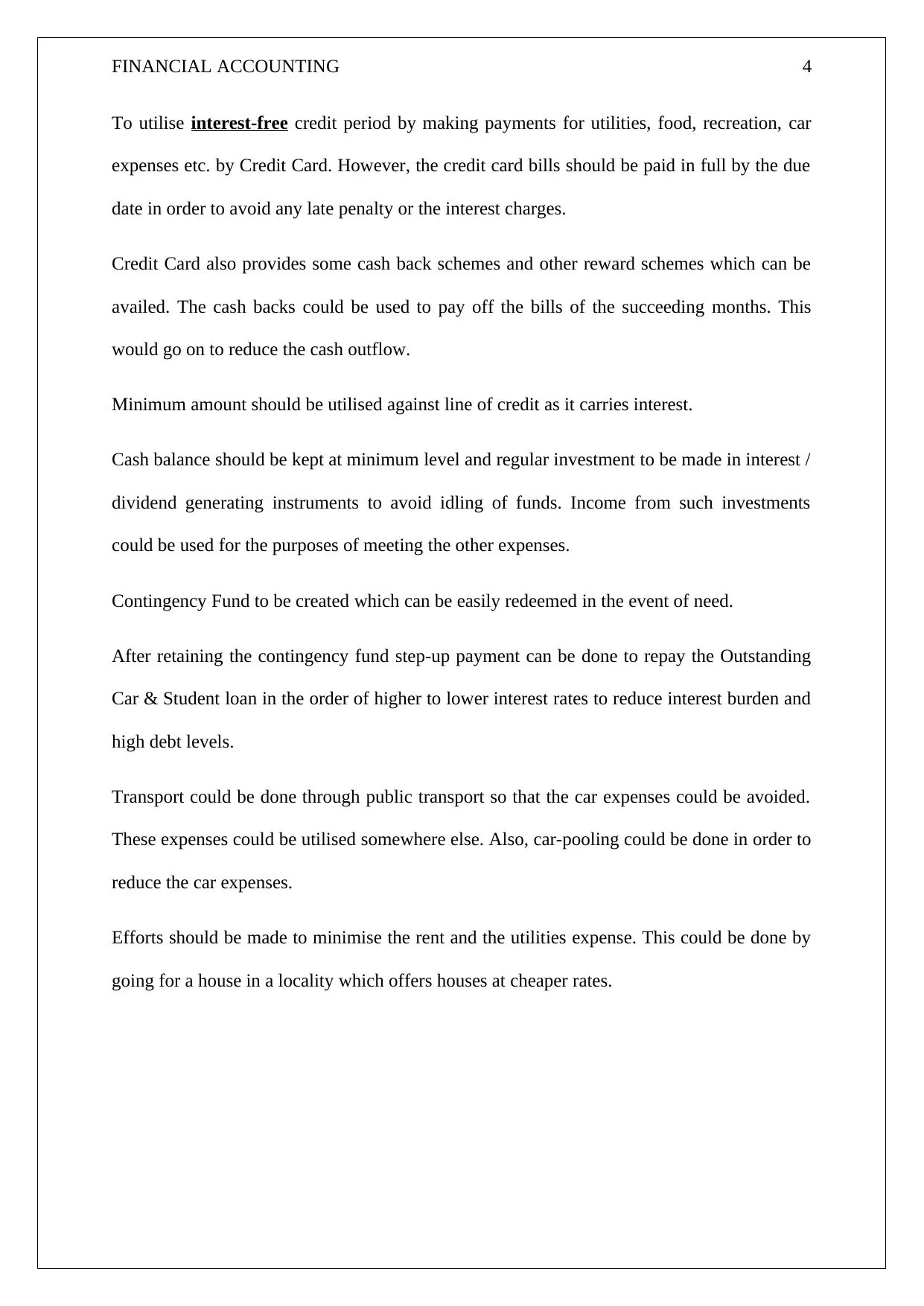Financial Accounting Assignment Solution: Detailed Analysis & Advice
VerifiedAdded on 2022/09/07
|4
|476
|20
Homework Assignment
AI Summary
This financial accounting assignment solution analyzes a personal financial scenario, detailing cash inflows and outflows, debt positions, and investment strategies. It includes a cash flow statement, outlining receipts and payments, and calculates the year-end cash balance. The solution also assesses the student's debt, including student loans, car loans, and credit card balances. Furthermore, it provides financial advice, such as utilizing interest-free credit periods, managing credit card usage to avoid penalties, and prioritizing debt repayment based on interest rates. The assignment also suggests strategies for investment and creating a contingency fund, along with recommendations for reducing expenses through alternative transportation and housing options. Overall, the solution offers a comprehensive approach to personal financial management.
1 out of 4











![[object Object]](/_next/static/media/star-bottom.7253800d.svg)